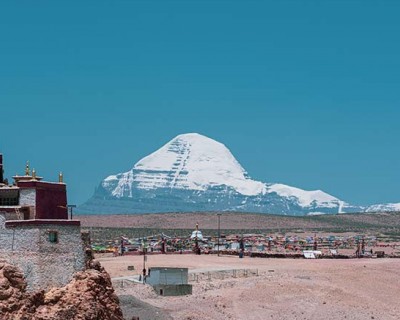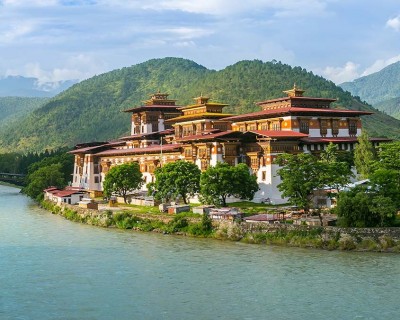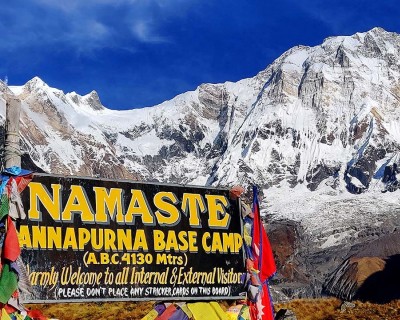Where is the death zone of Mt Everest
The death zone of Mt Everest is any part of the peak above 8000m(26,247ft). Out of all deaths on Everest till now, over 200 have died here at this point. Hence, this spot of the peak is popular as the Death Zone. The oxygen level is so thin at the death zone. The oxygen available in the death zone is only one-third of the normal oxygen level.
Climbers have to take supplementary oxygen tanks with them while ascending the peak. And any problem or shortage of oxygen tanks in such height is the ultimate reason for altitude sickness and possibly death. The route is extremely cramped as it doesn’t have an area for the upcoming queue. As you may have seen, the viral photo of climbers in the queue to complete the Everest climb. That region is the Death Zone. In peak seasons, the climbers have to stick in the death zone for long hours.
Why are the dead bodies piling up in Rainbow Valley Everest?
The part above the 8000m(26,247ft) of Mt Everest is considered the Death Zone. Most of the death casualties occur here. There is scarce oxygen level in the death zone and any shortage of oxygen supply ultimately leads to death.
The trail to the summit in the death zone is so narrow that it can only hold one body at a time. Hence the dead body in the trail of death zone is pushed towards the area below in Rainbow Valley. So anyone who dies in the death zone their tomb will be in the Rainbow Valley.
So their dead bodies are either walked over or pushed off from the trails to the Rainbow Valley or other areas below the ridge. Chad Gaston, a recent climber of Mt. Everest, described the difficulty of passing incapacitated people as he ascended, including a man wrapped like a mummy.
More than 300 climbers have died in this death zone since 1922. In 2015 an avalanche killed at least 19 climbers. The number of corpses is increasing with time, and the rainbow valley is adding color to it.
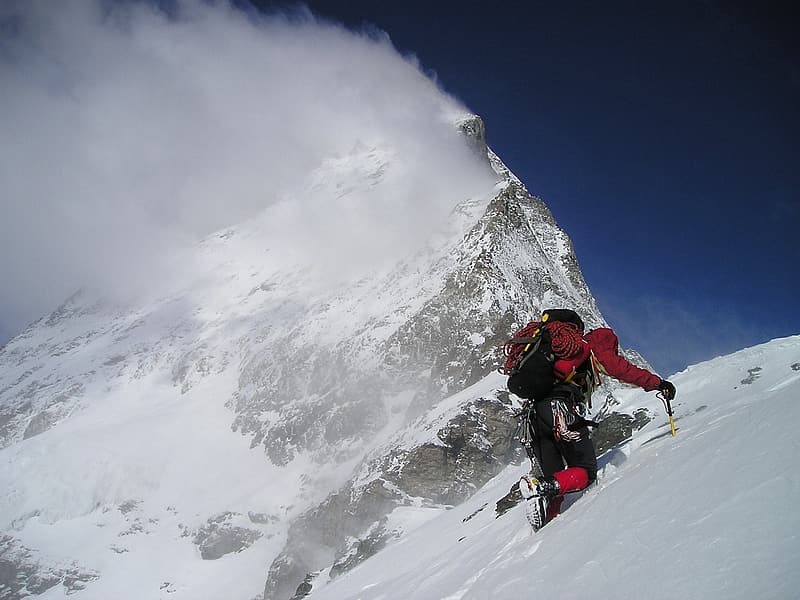
What happens to the dead bodies in the Mount Everest
What happens to the corpse in Rainbow Valley or the Death Zone of Mt Everest? Well, mostly, the body either remains forever in the death zone like Rainbow Valley or maybe sometimes recovered as it’s not easy or almost impossible to recover the body from that elevation. The Helicopter rescue is almost impossible due to the powerful wind. Extreme weather, narrow trails, and high altitude make it difficult to bring down the body. Also, it requires multiple heads to recover one body. Who in this world will do that for the dead body? Possibly no one.
The cost of recovering the body is more than 70k USD. Until now, several of the bodies have been recovered from the death zone by paying the amount. But the recovery is not easy and can cost further deaths. In 1984 two Nepalese mountaineers died while recovering a body from the death zone. Here, even money doesn’t guarantee the recovery of the body. No one is easily ready to bring down the body. Hence, forming the pile of corpses in the Rainbow Valley.
What is the main cause of death on the Mount Everest
Most of the deaths occur in the death zone of Mountain Everest. The point above 8000m is simply a tough place to be in. At this height, the oxygen level is thin, the weather is harsh, and strong wind, and most of all, the trail is too narrow. Even a simple fault can cause death. Every step taken forward is counted as the point of death and life.
According to the Himalayan Database of 2019, almost 5,000 climbers have climbed to the top of Mount Everest, 295 of whom have died since 1924. The death rate was under 1% in 1980. According to the BBC report, the majority of the deaths were due to avalanches (around 41.6 percent), while 22.2 percent of the deaths on Mount Everest were due to Acute mountain disease. Similarly, Falls and Exhaustion are other causes of the death in the Everest climb. The death rate during the 1970-the 1980s was the highest i.e 2.2%. And it’s decreasing as in 2019, the death ratio was 1%.
Everest Base Camp Stories
Everest Base Camp is the gateway to the summit of Mount Everest. Tent settlements of mountaineers are all around the Base Camp. During the peak season, base camp becomes vibrant due to the many colored tents. This is the final rest station before they ascend. During the stay, mountaineers chant their songs, experiences, and stories. People here in base camp whisper the same old legends. Some famous stories are whispered through every ear of climbers in the Everest Base camp. The stories related to the corpses in the rainbow valley. The three most famous stories are Green Boots Everest, Sleeping Beauty Everest, and Hannelore Schmatz.
Green Boots Everest
Green Boots is one of the true stories of the Everest Expedition. This story is also highly backed by the media. Green Boots Everest is actually a dead body on the northeast corner of Everest. The reason it's called Green Boots because it has a pair of green boots on it and oxygen tanks on its back. People assumed that the body could certainly be of Tsewang Paljor, an Indian climber who was reported missing after he attempted to climb to the top in 1996.
Along with him, two other climbers also died in that incident but other bodies have never noticed. But this “green boot” body rested in the small cave below the summit. The body remains in the same spot under the cave and works as a map for the climbers of Mount Everest. About 80% of climbers take a rest at this cave while summiting the peak. This is the most visible and most famous corpse in the Rainbow Valley.
Sleeping Beauty Everest
It is another popular Everest Base Camp story. This is the story of Francys Arsentiev, the first American lady to climb Mt Everest without supplemental oxygen. This is the incident of the year 1998 on May 22. Francys and her husband embarked on the expedition just like their other mountain expedition. Her ascent was good, but while descending, she felt uncomfortable with the surroundings. And she was stuck on the peak for 3 days without supplemental oxygen; then a team went to bring her down.
But, when the team found her, she hardly breathed, mostly frostbitten and close to death. The team roped her down as far as they could. After that, it was almost impossible to bring her down. So, they left her to die in the backdrop of Mt. Everest. She was found lying in her back just like sleeping hence nicknamed “Sleeping Beauty.”
Hannelore Schmatz- First women to die on Everest
The German mountaineer Hannelore Schmatz is the first woman to die on the lapse of Mount Everest. In 1979, she and her husband decided to climb the tallest mountain. They joined the group of 6 other climbers and 5 sherpas to ascend the peak. They successfully completed ascending. But while descending, all the members made it back, but Hannelore and American climber Ray Genet did not. Despite their experience in climbing, they were so tired and exhausted that they decided to spend overnight with one of the sherpas in the death zone of Everest.
That night a strong snowstorm hit that place, and Ray Genet died before dawn due to hypothermia. Hannelore and the sherpa made out of that dreadful night. While on their way down at 8290m, she fell down and sat with the aid of a backpack. And after that, she never got up. Her last few words were’ water, water”. Her corpse remained their open eyes and long hair blowing with the wind. For years, her body was passed by many climbers and observed.
Interestingly, after five years, two other climbers died while attempting to recover Hannelore Schmatz’s body. They were found tangled in their ropes on Everest. And a year later, her body was swept over the ridge by the strong wind. This is why Hannelore Schmatz became famous for Everest's death tale.
Mt Everest Expedition
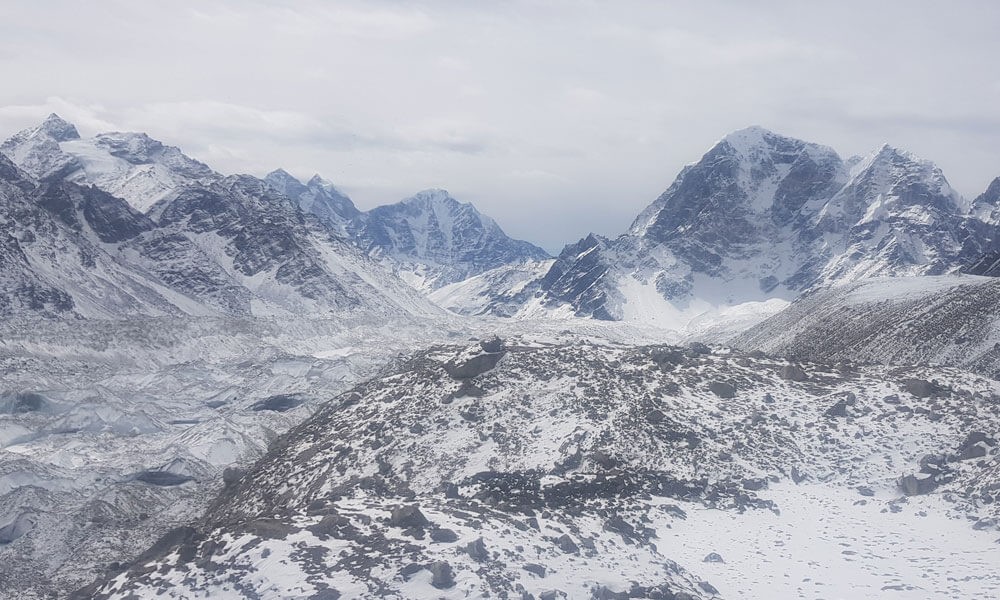 Death is part of life. It can even happen while sitting drinking water. So, forget about dead bodies and the Rainbow Valley. Mt Everest, the magnetic field for every climber always welcomes the new climbers. Till now more than five thousand climbers have summited the top. The death ratio is also under 1% which is far better than the other peaks. So, come out of the comfort zone and dare this expedition.
Death is part of life. It can even happen while sitting drinking water. So, forget about dead bodies and the Rainbow Valley. Mt Everest, the magnetic field for every climber always welcomes the new climbers. Till now more than five thousand climbers have summited the top. The death ratio is also under 1% which is far better than the other peaks. So, come out of the comfort zone and dare this expedition.
Mt. Everest Expedition is the ultimate destination for any mountaineer. The summit of this peak provides the greatest sense of achievement and success. Viewing the world from the height of 8848m is everyone’s wish. But, only a few adventurers summit Everest and see the world from above.
After the first summit by Tenzing and Hillary in 1953, Mt. Everest has seen the flow of mountaineers from all around the world. They all come to conquer the top of the world. Every year this peak is climbed by around a thousand climbers. You can find two major routes to the Top of Everest: Nepal and Tibet. Both of these routes have their own challenges and difficulties. But, the southern route from Nepal is the most used and quicker one. Tenzing and Hillary also followed this route from Nepal hence making this route the most popular.
The expedition to Everest leads you to high elevation and harsh climatic conditions. It highly demands prior experience in high mountain climbing. Additionally, hard work, stamina, determination, and skill are equally important as prior experience.
How long it takes to climb Mount Everest
The expedition is 65 days long, but if it’s about the basic days of climbing, then it is 47 days to ascend the peak and descend from peak to base camp. Apart from the lower Everest Base Camp, there are 4 more base camps to the top. Climbers pass each base camp going up and down to reach the peak. Also, they rest at base camps to acclimatize themselves to the surroundings. Due to this also, the total expedition time goes so long.
Besides the climb, there is a beautiful Everest Base Camp trek from Lukla. This trek lasts for 10 days. You’ll reach Everest Base Camp through beautiful villages, forests, and green hills of the Everest region. To sum up, the Everest Expedition is a package that starts from touring the old city of Kathmandu to climbing the world’s highest peak. You’ll experience a lot of things in one package. Peace, Success, Hard Work, Commitment, or simply, you’ll taste everything in this journey.
Everest Base Camp Trek
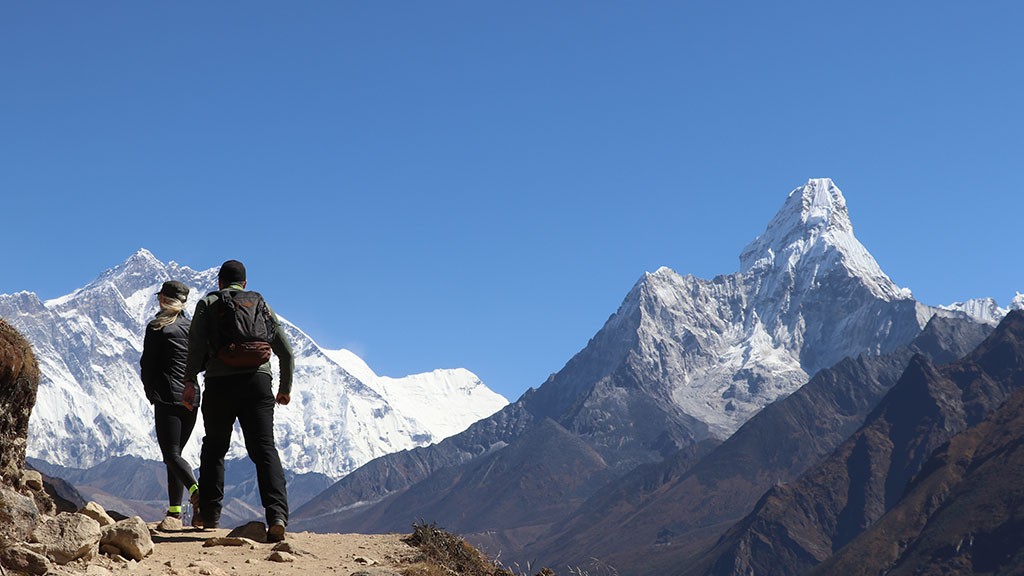
The Everest Base Camp trek is an inherent part of the Everest Expedition. That is, every Mt. Everest climber has done this trek from Lukla to Everest Base Camp. This trek is marked as moderate, but if you are here for the summit of the peak, this is nothing. Everest Base Camp trek from Lukla is the first few steps toward the top. This trek makes you prepare for the climb and enlarges your pain endurance. It also helps to acclimate your body to the elevation and climate before the ascent.
However, you can do this trek without Everest Expedition. It is also one of the most popular and beautiful treks in the world. In record, around 30,000 people pick this trek over other places. This trek includes everything that the traveler is longing for. The best Mt. Everest view from Kala Patthar, the beautiful Sagarmatha National Park, the world’s menacing airport Lukla Airport and Everest Base Camp. If you are a travel enthusiast, this place is a must-visit to expand your travel taste.
To find out more about this tour, click this link: Everest Base Camp Trek
Everest Base Camp via Helicopter
Other than the Everest Expedition and EBC trek, there are some other ways to reach the Everest Base Camp:
Everest Base Camp Helicopter Tour:
The first one is a one-day helicopter ride to Everest Base Camp. It’s for you if you don’t like trekking. It’s a 5-6 hour-long tour in which the helicopter directly takes you to Lukla from Kathmandu.
While in the air, you can enjoy the surreal views of green terrains and the Himalayan range of Nepal. It will land in various locations for you to enjoy and explore the area. It generally stops at Lukla, Namche Bazaar, Tengboche, Dingboche, Everest Base Camp, and Kala Patthar to make you soak in the beauty. You will explore all the main corners of the Everest region like the trekkers. There you will also have a tasty breakfast and lunch. Long uphill and steep trails will obviously be missed.
To find more about this tour, click this link: Everest Base Camp Helicopter Tour.
Everest Base Camp Heli-Trek
This is a total package that includes airplane flight, Helicopter ride, and trekking. This Heli-trek is 8 days long. It includes 6 days of trekking and 1 day for acclimatization, and 1 day for a helicopter ride. Your tour will start with a flight to Lukla from Kathmandu. From Lukla, your trek toward Everest Base Camp will start. Your trail will run through many beautiful villages of Sherpa communities. The mountain view will not leave you forever in the backdrop throughout the trek. You’ll also enjoy the green vegetation of Sagarmatha National Park. Finally, you’ll reach Everest Base Camp to capture the breathtaking views of the highest mountains.
After exploring the Everest region, the helicopter will take you back to Lukla from Everest Base Camp. From there, you’ll take a flight to get back to Kathmandu. This tour is for those who want to taste every possible way to Everest Base Camp.
To find out more about this tour, click this link: Everest Base Camp Heli-Trek
Similar trips you may like:
Final Say
Everything has its dark side, so does Mt Everest. Rainbow Valley and Death Zone are two dark sides of Everest. Thinking too much about these can lower your motivation and mentality. It will keep you forever away from the most satisfying achievement. Rather accept the fact and prepare well both mentally and physically. Rainbow Valley has been there ever since.
Until now, many climbers have summited the peak by crossing the Rainbow Valley, so you can. If you are good at climbing and have already climbed other peaks but not Everest. Surely, you are missing a hell of an adventure. Come and top the peak of Everest to know what you are missing out.
About Us
.jpg)
Marvel Adventure is a promising company providing tour and travel experiences such as trekking, hiking, mountain flight, peak climbing, rafting, paragliding, jungle safari, and many other adventures. The definite objective of this company is to offer high-quality travel services and travel satisfaction. You will not regret choosing Marvel Adventure.
For those seeking an additional level of challenge and excitement in their Himalayan adventure, the Everest Three High Passes Trek is a fantastic choice. This trek not only encompasses the traditional Everest Base Camp route but also traverses three of the highest passes in the Everest region, providing stunning vistas and a unique experience of the region's varied landscapes.
If you want to go on a trek or an expedition, or you want to go on a helicopter tour, if you want to go on a Heli-trek, Marvel Adventure gives you all sorts of options. If you are in Nepal and confused about the right tour and travel company. Marvel Adventure is always there for you to make your trip wonderful. The only thing that is left to do is pick up your mobile and book the trip.




 Death is part of life. It can even happen while sitting drinking water. So, forget about dead bodies and the Rainbow Valley. Mt Everest, the magnetic field for every climber always welcomes the new climbers. Till now more than five thousand climbers have summited the top. The death ratio is also under 1% which is far better than the other peaks. So, come out of the comfort zone and dare this expedition.
Death is part of life. It can even happen while sitting drinking water. So, forget about dead bodies and the Rainbow Valley. Mt Everest, the magnetic field for every climber always welcomes the new climbers. Till now more than five thousand climbers have summited the top. The death ratio is also under 1% which is far better than the other peaks. So, come out of the comfort zone and dare this expedition.
.jpg)
